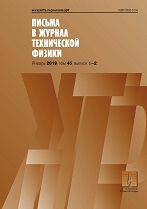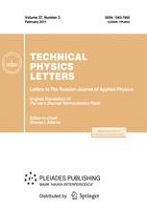|
Decreasing density of grown-in dislocations in AlN/$c$-sapphire templates grown by plasma-activated molecular beam epitaxy
V. V. Ratnikov, D. V. Nechaev, A. V. Myasoedov, O. A. Koshelev, V. N. Zhmerik
Ioffe Institute, St. Petersburg
Abstract:
Multiple-crystal X-ray diffraction and a multi-beam optical stress sensor were used to study AlN/$c$-sapphire templates grown by plasma-assisted molecular beam epitaxy. The influence of the nucleation and buffer layers growth regimes, temperature, the ratio between Al and N* growth fluxes on the stress generation and the character of the dislocation structure were analyzed. Templates with the best crystal quality with screw and edge threading dislocation densities in a range of 4 $\cdot$ 10$^{8}$ и 8 $\cdot$ 10$^{9}$ cm$^{-2}$, respectively, were obtained at the flux ratio of Al to N$^*$ close to 1 by using two-stage temperature regimes.
Keywords:
molecular beam epitaxy, AlN/c-sapphire templates, threading dislocations, X-ray diffraction.
Received: 27.12.2019
Revised: 28.01.2020
Accepted: 28.01.2020
Citation:
V. V. Ratnikov, D. V. Nechaev, A. V. Myasoedov, O. A. Koshelev, V. N. Zhmerik, “Decreasing density of grown-in dislocations in AlN/$c$-sapphire templates grown by plasma-activated molecular beam epitaxy”, Pisma v Zhurnal Tekhnicheskoi Fiziki, 46:8 (2020), 36–39; Tech. Phys. Lett., 46:4 (2020), 389–392
Linking options:
https://www.mathnet.ru/eng/pjtf5132 https://www.mathnet.ru/eng/pjtf/v46/i8/p36
|


|





 Contact us:
Contact us: Terms of Use
Terms of Use
 Registration to the website
Registration to the website Logotypes
Logotypes








 Citation in format
Citation in format 